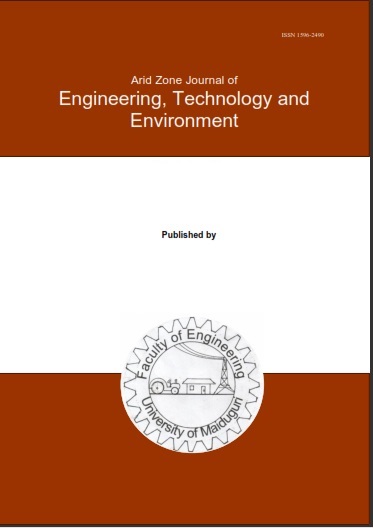Abstract
Heavy metal contamination in water presents a critical environmental challenge, necessitating effective and sustainable solutions. This study explores the use of natural corn husk as an adsorbent for lead (II) removal from aqueous solutions. The corn husk was processed by drying, crushing, and sieving through a 75 μm mesh screen, followed by characterization using scanning electron microscopy (SEM), Fourier-transform infrared (FTIR) spectroscopy, and Brunauer-Emmett-Teller (BET) analysis. Batch adsorption experiments were conducted to investigate the effect of adsorbent dosage on the isotherms and kinetics of lead (II) removal. The results revealed that the percentage removal of lead increased with both adsorbent dosage and contact time, achieving equilibrium at 105 minutes. The highest removal efficiencies were 73%, 93%, and 96% for dosages of 0.5 g/L, 1 g/L, and 1.5 g/L, respectively. However, the adsorption capacity decreased with increasing dosage, from 111.72 mg/g to 49.06 mg/g. FTIR analysis confirmed the presence of functional groups such as hydroxyl, carboxyl, and ether groups, which contributed to the adsorption mechanism through chemisorption. Similarly, BET results showed a high surface area of 114.55 m²/g with microporous characteristics, while SEM micrographs revealed a dense, rough, and porous morphology with well-distributed active sites. Furthermore, Isotherm analysis demonstrated that the Langmuir model provided the best fit across all dosages, indicating monolayer adsorption with maximum adsorption capacities (qm) ranging from 85 mg/g to 178.57 mg/g. Separation factor (RL) values of 0.2 and 0.19 at lower dosages indicated favorable adsorption conditions, while RL = 0 at 1.5 g/L suggested irreversible adsorption. Kinetic studies confirmed the pseudo-second-order model as the most accurate across all dosages, highlighting chemisorption as the rate-determining mechanism. These findings underscore the significant role of adsorbent dosage in adsorption efficiency and provide insights into optimizing isotherms and kinetics for lead removal using corn husk.

This work is licensed under a Creative Commons Attribution-NonCommercial-NoDerivatives 4.0 International License.
Copyright (c) 2025 ARID ZONE JOURNAL OF ENGINEERING, TECHNOLOGY AND ENVIRONMENT

